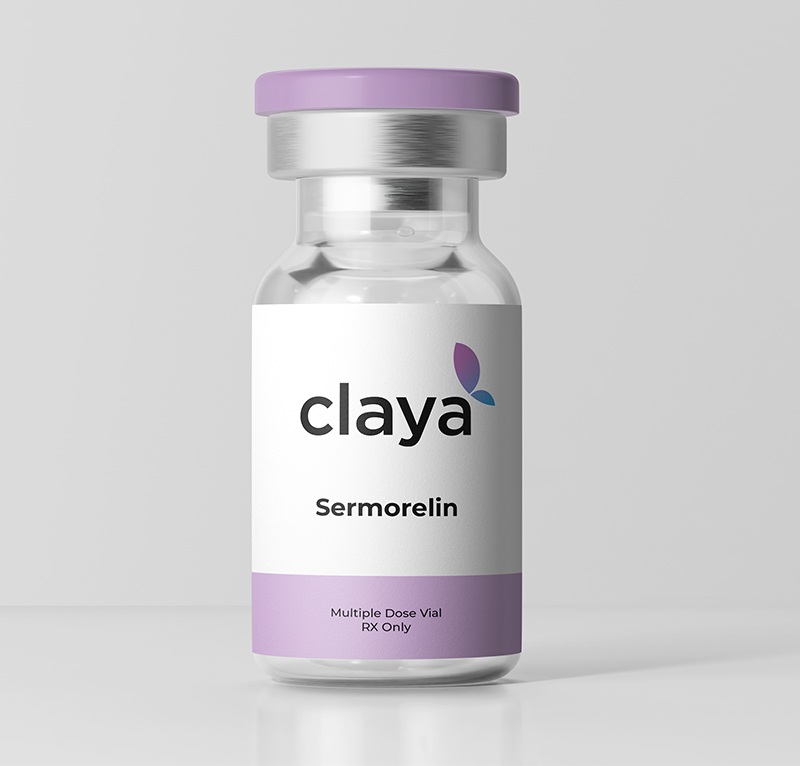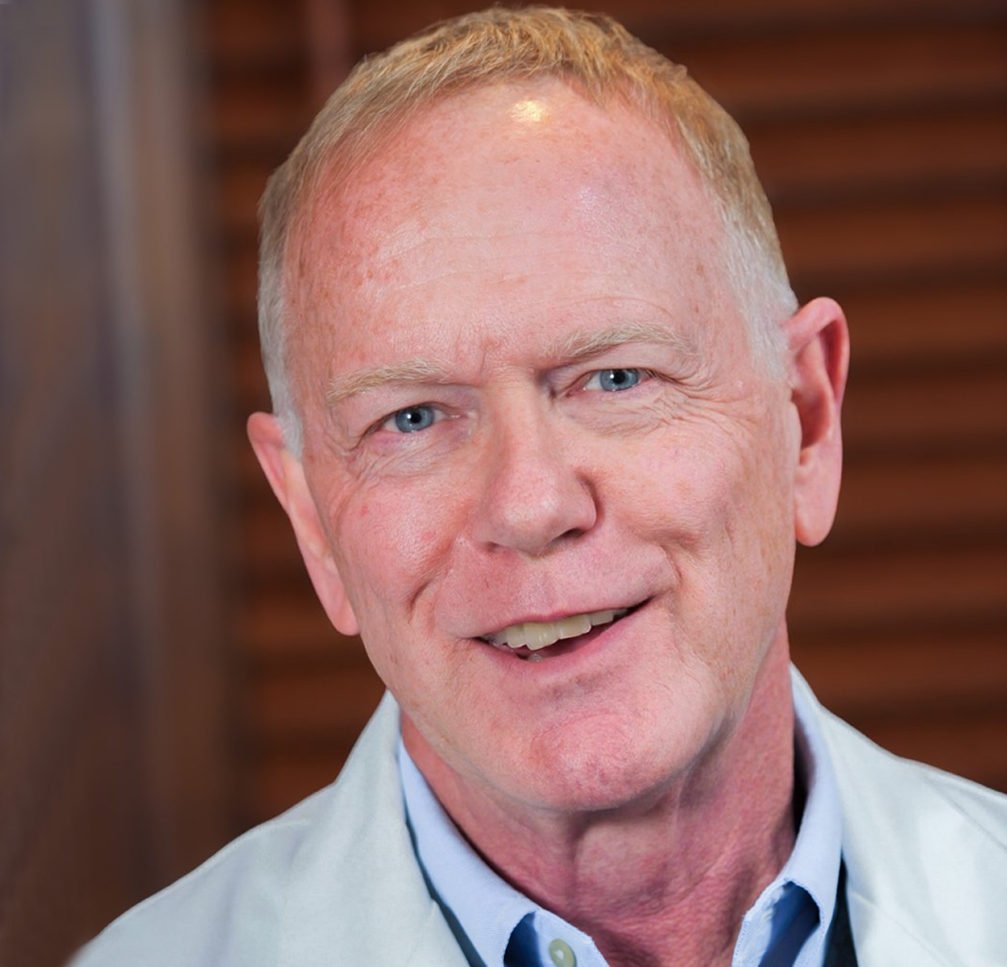SERMORELIN
Reset your system. Rebuild your edge.
If you’re tossing and turning at night, gaining fat in places where you never had it before, or pushing through workouts that feel harder than they should — growth hormone might be part of the story. Your body makes less of it as you age, and that slow dip can change everything from how you recover to how you look, move, and feel.

Most people notice:
![]()
![]()
![]()
![]()
![]()
As low as $199/mo
Sermorelin doesn’t replace your hormones. It helps your body make more of its own. Which means you get the benefits of growth hormone — better sleep, faster recovery, leaner muscle, and sharper thinking — without the risks of traditional hormone therapy.
This is about giving your system the signal to get back online.

AS SEEN IN:






Getting started on a slimmer, healthier you, is easier than ever
![]()
![]()

![]()
customized care tailored to your goals, lifestyle, and biology — from medication to expert coaching and guidance.
![]()
![]()
Weight loss potential with Claya*

What sermorelin does
Sermorelin is a prescription peptide that helps your brain tell your body to make more growth hormone. It works by stimulating your pituitary gland — not flooding your system with synthetic hormones, but nudging your natural production to get back to where it should be.
That shift can impact your sleep, metabolism, recovery, and how you handle stress. It’s like flipping the “on” switch for repair mode — not just overnight, but every night.
Signs your growth hormone might be low
You don’t need a full-blown deficiency to benefit from treatment. Some of the most common red flags include:
- Poor or shallow sleep — waking up tired or wired
- More body fat, especially around the belly
- Slower recovery from workouts, injury, or illness
- Brain fog or trouble concentrating
- Less muscle or strength, even with effort
- Dull skin, low energy, or just feeling “off”
If you’re seeing yourself in this list, sermorelin could be the missing piece.


Who it’s for?
Sermorelin is a great fit if you:
- Want to improve your sleep, recovery, or energy
- Are noticing signs of age-related slowdown
- Aren’t ready for HGH therapy (or don’t qualify)
- Want to stay sharp, strong, and lean — without going extreme
It’s safe, low-risk, and designed to work with your body instead of overriding it.
Meet your Claya medical advisory team
Learn about the medical experts who support your journey

Jennifer Habashy, NMD, MS
Specialist in Integrative Metabolic Health
Dr. Habashy blends cutting-edge science with a personalized approach to care. Specializing in GLP-1 therapy, nutrition, and holistic wellness, she’s here to help you feel strong, balanced, and in control of your health.
- Expert in GLP-1 therapy, nutrition, and hormone balance.
- Focused on personalized solutions for complex health challenges.
- Driven by science, shaped by compassion.

Dr. Sheila Bee, MD
Lifestyle and Behavioral Medicine Specialist
With over 25 years in internal medicine, Dr. Bee focuses on creating lasting, sustainable health transformations. She’s passionate about guiding you through challenges and helping you build a healthier, more confident life.
- 25+ years of transforming lives through better health.
- Sleep and stress expert with a practical, personal touch.
- Focused on changes that stick—and results that last.

Dr. Michael Barber, MD, PhD, FACC, FHRS, FAHA
Specialist in cardiovascular and metabolic health
A seasoned cardiologist and researcher, Dr. Barber combines decades of experience with a passion for empowering patients to reach their health goals. His expertise lies in creating tailored, science-backed strategies to deliver real, lasting results.
- 20+ years of expertise in cardiology and metabolic health.
- Holistic care focused on sustainable health improvements.
- Driven by science, delivered with a personalized touch.
What kind of results can you expect?
You’re not going to wake up with a six-pack after your first dose. But if your growth hormone production has taken a hit, it’s not subtle when your body starts kicking back into gear.
Most people notice:
- Deeper, more restorative sleep
- Faster recovery after physical stress or exercise
- Leaner body composition
- Clearer thinking and better mood
- More energy to do things — not just think about them
It’s not a quick fix. But it’s a powerful reset — especially if you’ve hit a wall with diet, workouts, or supplements that used to do the trick.

Claya makes it easy
You’ll fill out a quick online intake form, and a provider will review it to confirm you’re a good candidate. If approved, you’ll get a one-month prescription, with monthly check-ins that shift to quarterly once things are stable.

1
No office visits

2
No bloodwork to get started

3
No BS
It’s not about turning back the clock. It’s about turning things back on.
If you’ve been stuck in survival mode — dragging, crashing, gaining, grinding — sermorelin might be what helps you reset.
Let’s get you back to better.
Frequently asked questions
If you don’t see your question here, feel free to contact us at [email protected].
Understanding sermorelin and how it works
What exactly is sermorelin?
Sermorelin is a peptide — a short chain of amino acids — that acts as a messenger to your brain. It’s modeled after a natural hormone your body already makes, and its main job is to tell your pituitary gland to release more growth hormone.
What does sermorelin actually do in your body?
Once it’s in your system, sermorelin signals your pituitary gland to produce and release growth hormone. This helps support everything from muscle recovery and metabolism to sleep and cellular repair. Unlike taking growth hormone directly, sermorelin encourages your body to make its own — in a rhythm that feels more natural and sustainable.
What does growth hormone do, and how does sermorelin help with that?
Growth hormone (or GH) plays a central role in how your body repairs, recovers, and maintains itself. It helps stimulate tissue repair, supports muscle growth, regulates metabolism, promotes fat breakdown, and even contributes to better sleep and brain function. As you age, GH production naturally declines — which is one reason recovery gets slower, sleep gets lighter, and energy dips become more common. Sermorelin helps by nudging your body to start producing more of its own GH again, supporting those same systems in a more natural, steady way.
Is sermorelin the same thing as a hormone?
Not quite. Sermorelin isn’t a hormone itself — it’s a growth hormone–releasing hormone analog, meaning it mimics one of the body’s natural messengers that tells your pituitary to release growth hormone. It doesn’t replace hormones, and it doesn’t override your system. It just helps re-engage a process that might have slowed down.
How is taking sermorelin different from taking growth hormone?
The biggest difference is control. When you take growth hormone (GH) directly, you’re flooding the body with an outside hormone — and that can come with risks. Sermorelin works upstream by nudging your own system to make GH in a more natural, regulated way. That makes it generally safer, more sustainable, and less likely to interfere with how your body balances other hormones.
Why would someone choose to take sermorelin?
Most people take sermorelin because they’re dealing with fatigue, slow recovery, poor sleep, or other signs of declining growth hormone levels — especially as they age or lose weight. Others use it for muscle support, energy, or simply to feel more like themselves again. It’s not about boosting to superhuman levels — it’s about restoring what your body might not be making enough of anymore.
How does sermorelin actually get your body to make more growth hormone?
Sermorelin works by activating specific receptors in your pituitary gland — the same ones that respond to your body’s natural growth hormone–releasing hormone (GHRH). That stimulation tells your brain to send out pulses of growth hormone, which then circulates through your body and supports everything from cell repair and metabolism to sleep and recovery.
Is sermorelin considered natural or synthetic?
Sermorelin is synthetic — it’s made in a lab — but it’s modeled after something your body already produces naturally. It’s basically a lab-created version of the hormone messenger your brain uses to trigger GH release. That makes it feel more “native” to the body compared to something like injected GH.
How long has sermorelin been used in medical settings?
Sermorelin has been around since the 1990s. It was originally used in pediatrics to diagnose and treat growth hormone deficiency in children. Over time, its use expanded into adult wellness and age-related hormone support. It’s now commonly used in anti-aging medicine, metabolic health, and recovery protocols — with a strong safety profile and clinical history behind it.
What can I expect sermorelin to actually do?
Sermorelin helps your body produce more of its own growth hormone — and with that comes a wide range of possible benefits. Most people notice improvements in energy, sleep, recovery, mental clarity, and body composition over time. It’s not a quick fix, and it’s not a stimulant — but it can help restore a kind of baseline you might not have realized was missing.
Can it help with fat loss or changing body composition?
Yes — especially when it’s paired with movement and good nutrition. Growth hormone plays a role in how your body breaks down fat and builds lean muscle. By encouraging your body to make more of it, sermorelin can help support fat metabolism and lean mass retention, which is especially useful during weight loss.
Does sermorelin improve sleep quality?
For many people, yes. Growth hormone release is closely tied to deep, restorative sleep — particularly during the first few hours of the night. By supporting natural GH production, sermorelin can help you get more of that deep sleep that makes you feel recharged in the morning.
Can it support muscle gain or workout recovery?
Absolutely. GH is essential for muscle repair and recovery. Sermorelin can help you bounce back faster after workouts, maintain muscle more easily during weight loss, and potentially even support new muscle growth — especially if you’re also resistance training.
Will it give me more energy or stamina?
Most people report improved energy and better overall stamina after starting sermorelin. It’s not a stimulant, but it helps your body function more efficiently — especially when it comes to recovery, metabolism, and sleep. That often adds up to feeling more energized and resilient.
Can it help with skin, hair, or joint support?
It might. Growth hormone influences collagen production, tissue repair, and hydration — which can have positive effects on skin texture, hair strength, and joint comfort over time. Results vary, but some people do notice changes in these areas with consistent use.
Does it do anything for mental clarity or focus?
Some people notice improvements in clarity, focus, and overall cognitive function — especially if low energy or poor sleep were affecting their brain function to begin with. Sermorelin doesn’t directly target the brain, but by supporting sleep, metabolism, and recovery, it often helps you feel sharper overall.
Can it help me bounce back faster from stress or burnout?
Yes — that’s one of the main reasons people seek it out. When your body’s been under prolonged stress (physical or emotional), recovery slows and energy drops. Sermorelin helps support the systems that stress tends to wear down — especially sleep, tissue repair, and metabolic function.
Will I notice any anti-aging benefits?
You might. Sermorelin isn’t marketed as an “anti-aging” drug, but growth hormone does play a role in how we age — particularly in terms of energy, muscle tone, recovery, sleep, and body composition. Supporting your body’s ability to produce GH can help you feel more like yourself again, especially if aging has started to dull your edge.
Can sermorelin help if I’ve hit a plateau with weight loss or fitness?
Potentially, yes. Plateaus are often the result of slowed metabolism, poor recovery, or fatigue — and growth hormone influences all of those. While it’s not a fat burner, sermorelin can help get your system back in sync so you can respond better to your workouts and nutrition plan.
What happens to growth hormone levels as we age?
They gradually decline — sometimes more than we realize. By your 30s or 40s, your GH production may already be a fraction of what it was in your teens or twenties. That drop can show up as slower recovery, stubborn fat, brain fog, reduced muscle tone, or just feeling less sharp than you used to.
How does low growth hormone show up in the body?
Low GH doesn’t always feel dramatic — but it can affect energy, sleep, metabolism, mood, and physical recovery. You might find it harder to lose fat or build muscle, or notice that workouts leave you wiped for longer than they used to.
Do I need to have low GH levels to take sermorelin?
Not necessarily. You don’t need a formal growth hormone deficiency to benefit. Many people use sermorelin to support healthy GH levels as they age or go through periods of stress, fatigue, or physical strain.
Can sermorelin help balance hormones without using testosterone?
Yes. Sermorelin works through a different pathway, and it can be a good option for people who want hormonal support but aren’t ready for or interested in testosterone. It focuses more on recovery, sleep, and tissue repair than on libido or muscle mass alone.
Is sermorelin a good add-on for people on TRT?
It can be. Sermorelin may complement testosterone therapy by supporting energy, recovery, and overall well-being — especially if TRT isn’t addressing all your symptoms on its own.
How does it fit into a bigger hormone optimization plan?
Sermorelin can play a supportive role in broader optimization strategies — including those involving TRT, NAD+, sleep protocols, and nutrition. It’s not the whole picture, but it’s an important piece of the puzzle.
Can it help with low testosterone symptoms, even though it’s not testosterone?
Sometimes, yes. Low energy, poor recovery, and changes in body composition are often blamed on low T — but growth hormone decline can contribute too. By supporting GH, sermorelin may help with overlapping symptoms.
Does it affect other hormones, like cortisol or insulin?
Indirectly, it might. GH has interactions with other hormonal systems, and improving your GH levels may help bring some balance back to your metabolism and stress response. But sermorelin itself doesn’t directly manipulate cortisol, insulin, or other major hormone
Can women use sermorelin for hormonal support too?
Yes. Sermorelin isn’t sex-specific. It’s often used by both men and women who want to support recovery, metabolism, or healthy aging — especially during perimenopause or after major hormonal shifts.
Is it safe for people in their 40s, 50s, or older?
That’s actually when most people start looking into it. Sermorelin is often well tolerated and can be a good option for supporting healthy aging, especially when other systems are starting to slow down.
Who’s a good candidate for sermorelin therapy?
Most people looking to improve recovery, energy, sleep, or body composition as they age can be good candidates. It’s especially useful if you’re noticing slower progress, more fatigue, or just not bouncing back the way you used to — even with a solid routine in place.
Are there any conditions that would make someone ineligible?
Yes. People with a history of cancer, untreated endocrine disorders, or uncontrolled health conditions may not be a fit. That’s why a medical intake and clinician review are always part of the process.
Is it safe to use long term?
For most people, yes — especially when it’s used as directed and monitored by a provider. Sermorelin is designed to support your body’s natural rhythms, not override them. Some people take it for months, others for years.
Can I take it if I’m on other medications?
In many cases, yes — but it depends on the medication. During your intake, we’ll review your current prescriptions to make sure there are no interactions or contraindications.
Is it safe to use alongside TRT or NAD+ therapy?
Probably. Sermorelin is commonly paired with other treatments like testosterone replacement or NAD+ therapy. They work on different systems, so they can complement each other — but always check with your provider before combining therapies.
Is sermorelin FDA-approved?
Sermorelin, under the trade name Geref, was originally FDA-approved in the 1990s for pediatric use. It was later withdrawn for manufacturing reasons, not safety concerns. Today, it’s prescribed off-label for adult hormone support and is still widely used in clinical practice.
Do I need lab work before starting?
Not always. For most people, sermorelin can be prescribed based on a detailed medical history and symptom review. If you’re combining it with other therapies or have complex health issues, labs may be recommended.
Will it affect fertility?
There’s no strong evidence that sermorelin negatively impacts fertility, but it hasn’t been extensively studied in this area. If you’re actively trying to conceive, it’s worth having a conversation with your provider before starting.
Is sermorelin prescription only?
Yes. Sermorelin is only available with a prescription and should be supervised by a licensed healthcare provider. Be cautious of online products claiming to contain sermorelin — many are unregulated or counterfeit.
What side effects should I know about?
Sermorelin is generally well tolerated, but like any therapy, it can come with mild side effects. The most common are injection site reactions — like redness, itching, or slight swelling. Some people also report headaches, dizziness, or flushing, especially early on.
Can it cause swelling, joint pain, or anything uncomfortable?
It can in some cases. Because growth hormone can affect fluid balance, a small number of people may notice puffiness, joint stiffness, or mild swelling. If it becomes persistent or uncomfortable, your dose may need adjusting.
Will it mess with my sleep or mood?
It’s unlikely. In fact, most people find their sleep and mood improve over time. That said, if you feel wired, anxious, or unusually off after starting, it’s important to check in with your provider. It could be dose-related or a sign something else is going on.
What if I feel worse after starting it?
That’s not typical, but it’s worth paying attention to. Some people feel a little off during the first few days, especially if their dose is too high or their body’s adjusting. Don’t push through it — reach out and let your provider know.
Are there any long-term risks?
Current research suggests sermorelin is relatively safe when used appropriately. Because it stimulates your own hormone production rather than replacing it, the risk of disrupting natural balance is lower than with direct hormone therapy. Still, it should always be used under medical supervision.
Can I build a tolerance to sermorelin?
There’s no strong evidence of true tolerance, but taking periodic breaks — like a short “washout” phase every 6 months — may help keep your system responsive. This is something your provider can guide you on.
Will I lose progress if I stop taking it?
You won’t crash, but the benefits are likely to fade over time if you discontinue use. That might mean sleep gradually worsens, recovery slows down, or energy dips again. Sermorelin doesn’t create dependency, but consistency tends to give the best results.
Is there any kind of rebound effect after stopping?
Not typically. Because sermorelin supports your body’s natural processes rather than suppressing or replacing them, most people can stop without any kind of rebound. If you’ve been on it long term, a gradual taper might be helpful — but your provider can advise based on your situation.
Can sermorelin cause blood clots?
It’s not common. Sermorelin isn’t known to cause clotting issues in healthy users. If you do have a history of clotting disorders, it’s important to discuss that with your provider before starting.
How do I actually take sermorelin?
Sermorelin is typically given as a subcutaneous injection — meaning just under the skin, usually in the stomach or thigh. It’s quick and simple to do at home with a small insulin syringe.
Is it a pill, an injection, or something else?
It’s an injection. There’s no pill form — sermorelin needs to be injected to work properly. The good news is the needle is tiny and the process is easy to learn.
How often do I need to take it?
Most people take it once a day, five days a week. Some protocols use a slightly different rhythm, but five days on and two days off is common. Your provider will recommend what’s best for your goals.
Can I give it to myself at home?
Yes. You’ll get instructions on how to do it safely, and most people feel comfortable after a quick walkthrough. It becomes part of your routine, like brushing your teeth — just with a little more impact.
What’s a typical dose, and can it be adjusted?
A common starting dose is 0.3 mg once daily, or 0.25 mg twice daily, depending on your needs. Doses can be adjusted based on how you respond, and your provider will help guide that over time.
How long before I start noticing results?
Some people feel subtle improvements — like better sleep or energy — within a week or two. More noticeable changes in body composition, mood, or recovery usually take a few weeks to a few months. While many notice improved sleep or energy in the first 1–4 weeks, full benefits tend to build gradually over 3–6 months.
How will I know it’s working?
The signs are often gradual: deeper sleep, clearer thinking, better workout recovery, less fatigue. You might not notice it overnight — but over time, you’ll likely realize you just feel better, more often.
Do I need follow-ups or blood work while I’m on it?
You’ll check in regularly with your provider, but you may not need labs unless you’re combining therapies or managing a more complex health picture. If needed, your provider will let you know.
How long do people usually stay on sermorelin?
It depends on your goals. Some people use it for a few months as a reset, others stay on it longer-term. A typical pattern is to take it for several months, then take a short break (called a washout) before resuming. A common protocol includes 5 days on, 2 days off, with a 2-week break every 6 months to help maintain long-term sensitivity.
Can I take breaks, or do I need to stay on it continuously?
You can take breaks — and in fact, it’s often recommended. A brief washout period every 6 months helps keep your system responsive and reduces the chance of diminishing returns.
Can I combine it with other treatments or therapies?
Yes, and it’s often more effective that way. Sermorelin pairs well with treatments like testosterone, NAD+, or targeted supplements — especially when you’re working on energy, metabolism, or recovery from multiple angles.
Does sermorelin increase appetite?
It can. Sermorelin may indirectly raise levels of ghrelin — a hormone that stimulates hunger. That means you might feel a little hungrier, especially in the first few weeks. For people working to gain muscle or recover from fatigue, that can be helpful. But if you’re managing appetite as part of weight loss, it’s good to be aware and adjust accordingly.